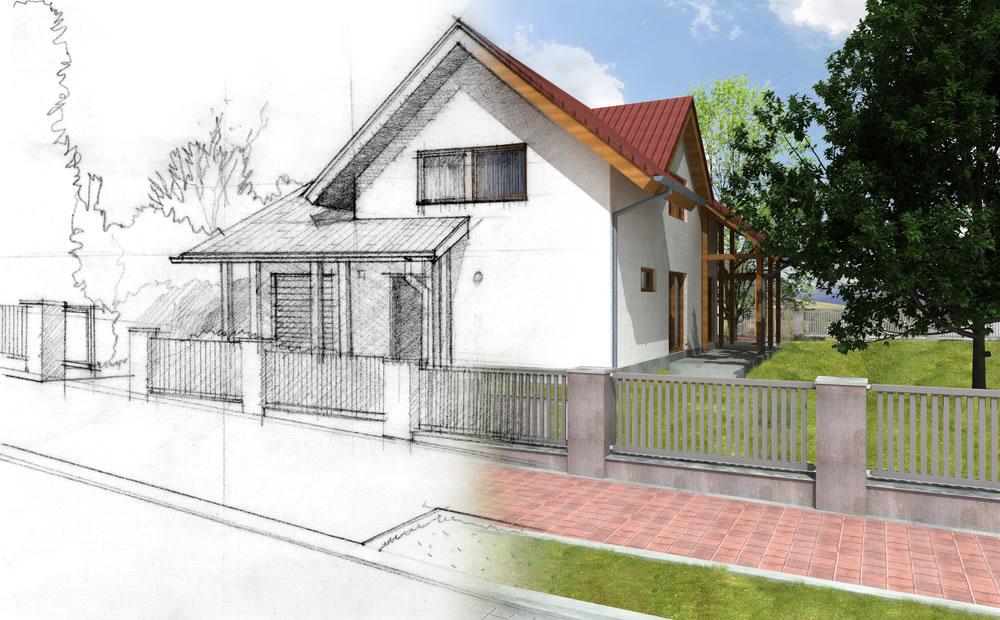
Author: Ed Beauchemin
Home Design and Construction ri-site selection: On any building project, before considering home design and construction, we must first find the right site. In selecting a lot for a new home, factors such as price, area schools and neighborhoods are universally understood. Factors, such as soil condition, topography and solar orientation should also be considered. The best building sites in terms of ease of development and desirable location have already been built on. The remaining land, especially in urban areas, present challenges requiring more site planning, up-front costs and longer permitting processes. Home designers must take into account not only the needs and wants of the owner but the challenges presented by the lot itself. Long before the process of home design and construction can be begin, we should consider the following:
Lots located next to potential pollution source
The location of your home is important for both resale value and the health and happiness of your family.
- Lots located next to heavy industry or commercial uses may be exposed to pollution in the form of chemical emissions, odor, light, noise, and contaminated soil. Check the town ordinances, Industrial and commercial zoning laws may allow operations at night, weekends and possibly holidays.
- Avoid lots near agricultural areas, (may contain high concentration of pesticide and herbicide run-off), power transmission lines, landfills and certain underground utilities.
- If not certain of a lot’s history, have a soil test done to check for contamination.
Topography and soil conditions
Consider the following questions: Is the lot flat, sloping, does it contain potential ledge? Is the soil good draining or water retaining? Is the natural water table low (below the basement floor) or is it high (within a couple of feet of finished grade,)?
- If a lot slopes to the south, can you take advantage of solar gain? Position windows and rooms to face southerly directions (passive solar), or install solar panels to harvest clean energy from the sun (active solar). South facing windows let in warm sunshine in winter, while overhangs can block hot sun in summer. Lots sloping to the rear are ideal for walk-out lower-levels, adding more usable space at minimal cost.
- Natural features such as rock formations, evergreen trees, shrubs and topography may offer protection from northerly winds in winter while allowing for cool shade in summer. When such natural features are not present, landscaping can be used to compensate.
- Lots with high water tables require foundations to be raised higher than usual, insuring that the basement floor is above groundwater. Some home plans such as raised ranches and raised capes lend themselves well to such lots, with basement floors only a few feet below grade by design.
- French drains are another weapon in the design arsenal. Such drains on sloping lots allow collected water to naturally flow out to the lowest point. When flat grades are present, French drains or discharge from sump pumps must be directed to on-site drywells or cisterns. CAUTION: Always check the local zoning laws. Some localities require that water from any source (French drains, sump pumps, gutters) be contained within the lot boundary (no off-lot discharge).
- Finished grades around the foundation should always slope away to dissipate rain water and melting snow.
- If the lot contains ledge and blasting is required, rather than pay to have blasted rock removed, use it for retaining walls and other landscaping features. On sloping lots retaining walls allow better use of grades.
Existing vegetation on the lot
During home design and construction, always strive to incorporate existing vegetation into the landscape design scheme. This is cost effective, protects natural features, and provides a place for wildlife and native plant species to flourish.
- Evergreens such as fir, spruce and pine trees help to block winter winds while deciduous trees (trees that drop leaves in fall) provide shade from the summer’s heat.
- When possible, leave wooded buffers in their natural state, thus reducing the lawn area and the chemicals required to maintain it. Not only will you be protecting native animal species, you will have less lawn to care for.
 Design Tip: Consider installing an underground cistern to collect rainwater from downspouts which can than be used for irrigation.
Design Tip: Consider installing an underground cistern to collect rainwater from downspouts which can than be used for irrigation.
Energy geeks is a Home Performance Contractor whose primary focus is sustainability and efficiency as it pertains to energy use, water consumption, indoor air quality, land use and building design.
We can be reached at 401-766-1540 or www.energygeeksinc.com

